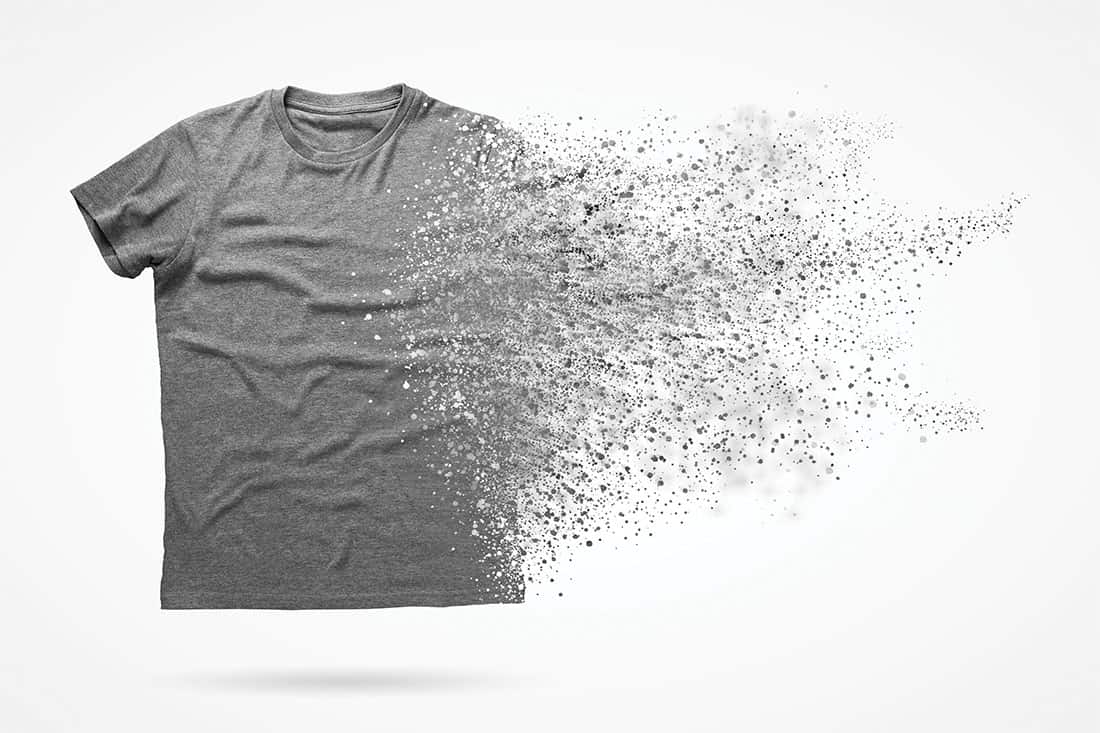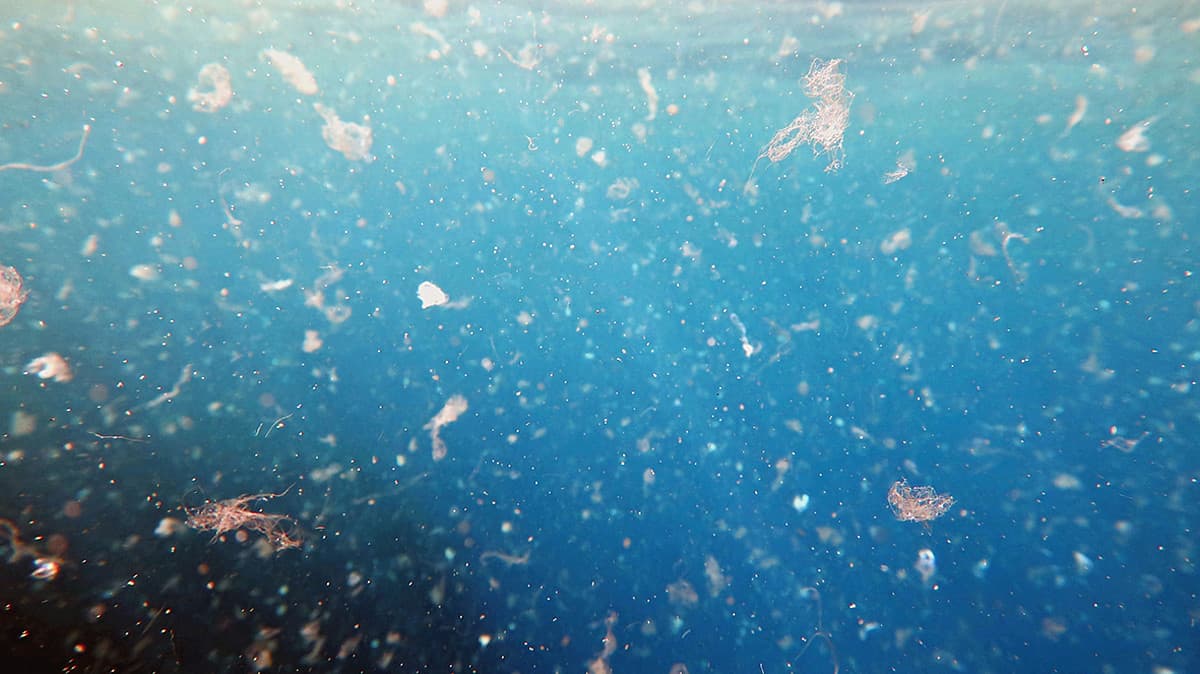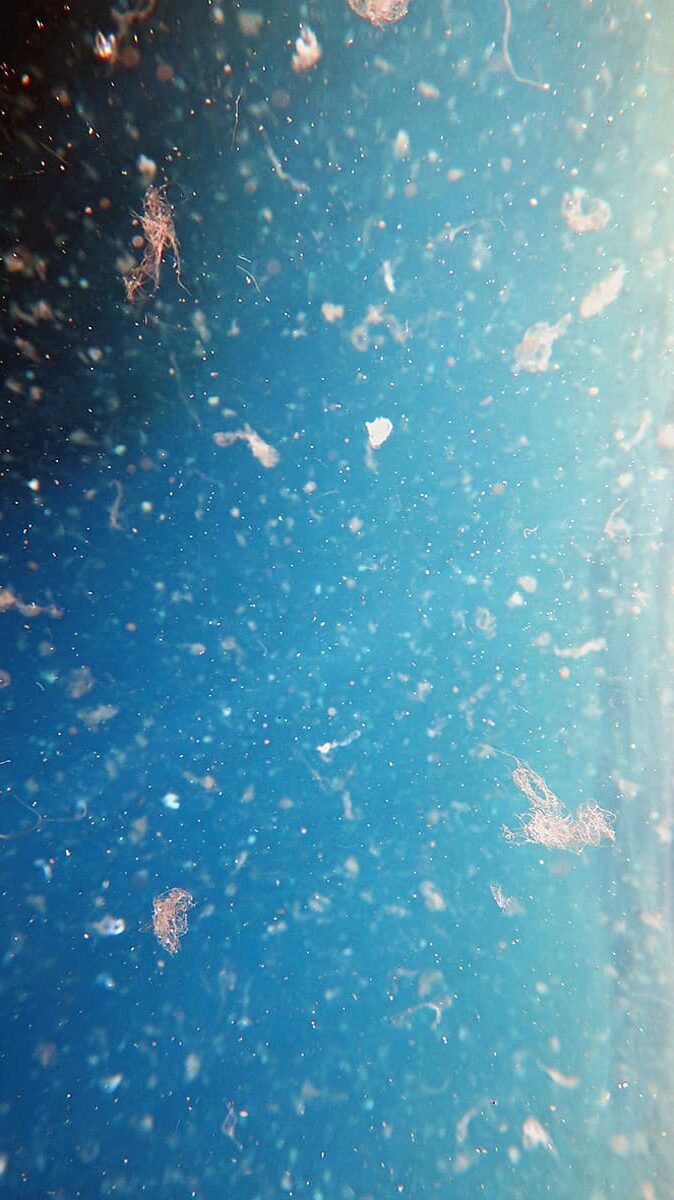What's the link between garments and microplastics?
Discover more about microplastic pollution and what your garments have to do with it
Pollution caused by microplastics in the environment has been under the spotlights for many years and is now a high profile topic, since this is probably the biggest threat for aquatic environments and more.
But first, what are microplastics? and how do they form? Microplastics are defined as plastic particles smaller than 5 mm, and are further divided on the basis of their origin, as “primary microplastics” if they are intentionally produced either for direct use or as precursors to other products (manufacturing, use and maintenance of goods made of, or containing, plastic or synthethic materials); and “secondary microplastics” if they are formed in the environment from breakdown of larger plastic materials.
This process occurs as a result of various environmental factors such as photo-degradation, oxidation, humidity, extreme temperatures, etc. Some examples of secondary microplastics are those that result from plastic waste, such as shopping bags, fishing nets or plastic cups. From any point of view, MPs are a microscopic, yet a major, problem, since they contain or carry hazardous chemicals that have a negative impact on nature and human health, such as plasticisers (a substance added to improve plasticity and flexibility of a material), flame retardants, antimicrobial agents, organic pollutants (POPs) and heavy metals, which adhere to the surface of microplastics when exposed to the environment; and so their ingestion through water, or foods such as fish or shellfish, is of particular concern. While wastewater emitted from industrial and household sewage is processed at wastewater treatment plants to cleanse the water and remove toxic substances before the water returns to the water cycle, plants are unable to remove microplastics because of their extreme small sizes.

Textiles are the largest source of primary as they account for 34.8% of global microplastic pollution…
During the washing process of synthetic clothing – made from (or containing) plastic such as polyester and acrylic – fabrics are subjected to mechanical stresses and abrasion that cause fragmentation of the fiber yarns, this results in tiny microplastic fibers that are shed and are not retained by washing machine filters, thus having an easy go into the wastewater. The latter then goes to sewage treatment facilities. As the fibres are so small, many pass through filtration processes and make their way into our rivers and seas. Once these particles enter the aquatic environment, various oceanic species such as zooplankton ingest microplastics as food, so they create potentially longer-term risks for living organisms (us included) and entire ecosystems. While more research is required, scientists broadly believe that plastic being ingested by humans could have various negative results. Possible effects could include damage to liver, reproduction problems, developmental delays in children and chronic inflammation, among others. Given the bio-persistent property of plastic, the impact could be very long-lasting, and it could take a huge effort to rectify the problems we have been creating over the past two or three decades as a result of microplastic pollution.

The most worrying thing is that 68% of global fiber production can be attributed to production of synthetic fibers, with polyester the most produced fiber, accounting for 51.5% of total fiber production.

...But what defines the microplastics-release rate of a garment?

The microplastic problem does not only originates from synthethic fibers, unsuitable washing machines and waste-water treatment facilities, but a large part of it depends on your garments’ textile characteristics. In fact, composition (neat or blend), fabric structure (woven or knitted), yarn twist (high or low), fiber type (staple or filament), and hairiness (high or low) have all an important role in defining different rates in a garment’s microplastics release. The lowest MP releases – to both air and water – are usually recorded for garments with a very compact woven structure and highly twisted yarns made of continuous filaments, compared with those with a looser structure (knitted, short staple fibers, lower twist). Ultimately, we can state that in order to reduce microfiber emissions to water and air, there are some optimal textile parameters that brands MUST take into consideration right from the design stage, but also during the actual production of garments.
What MUST BE DONE to tackle microplastic pollution?
Nr. 1
STANDARDIZE FILTERS IN WASHING MACHINES TO RETAIN MICROPLASTICS IN DOMESTIC WASHING
The world urgently needs (affordable and easy-to-use) commercial washing machine filters that can capture microfibres. Legislations must ensure that all new washing machines are fitted with effective filters to capture the maximum amount of microfibres possible.
Nr. 2
WORLDWIDE WASTE-WASTER TREATMENT PLANTS MUST IMPROVE THEIR MICROPLASTICS FILTERING
Waste-water treatment plants (where all our used water gets filtered and treated) are currently between 65-90% efficient at filtering microfibres. Research and innovations into improving the efficiency of capturing microfibres in wastewater treatment plants is essential to prevent them escaping into our environment.
Nr. 3
EDUCATION TO CONSUMER ON THE BEST WASHING PRACTICES TO REDUCE MICROPLASTICS SHEDDING
As some studies have it, using a liquid detergent instead of powder, washing programs with less water, lower washing machine temperatures, gentler washing machine settings, and even using a front-loading washing machine can reduce microfibre shedding. How about using a Cora Ball or a Lint LUV-R? it has been shown that they reduce the number of microfibres in wastewater by an average of 26% and 87%, respectively.
Nr. 4
PRODUCING LESS AND REDUCING THE USE OF SYNTHETIC FIBERS FOR GARMENT MAKING
Balance is always a key word when it comes to making decisions. Many people would say to switch from synthetic materials to natural materials in order to reduce to zero microplastics release in fashion. Well, it is not that easy, because – given the current consumption rates - if the whole fashion world turned to natural materials, this would result in a worrying and massive pressure on land and water use. The first problem is that we produce too much, the second is that we use too many synthetics.

About Manteco, Italian premium textiles and circularity since 1943
After decades in the fashion world, in 2018, we have created the Manteco Academy project, through which we give webinars, in-person lessons and workshops on eco-design, circular economy and sustainability to numerous fashion schools, technical universities and brands worldwide. Thanks to this educative commitment and our heritage, we are often invited as guest speaker at events, panels, podcasts and conferences about sustainable fashion and circular economy.

